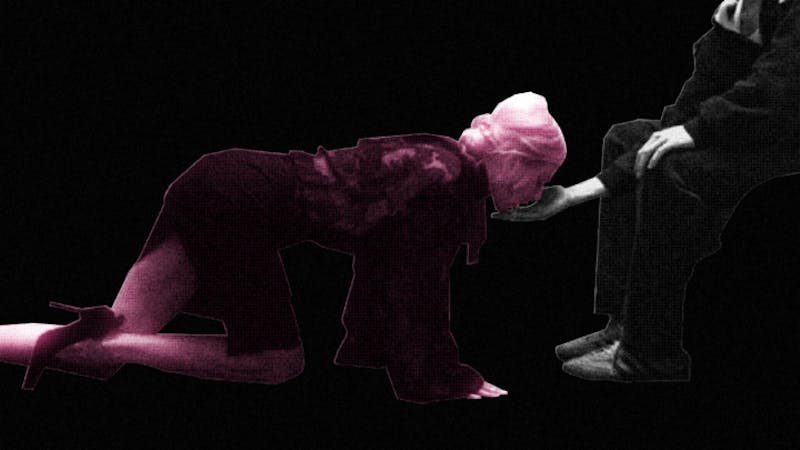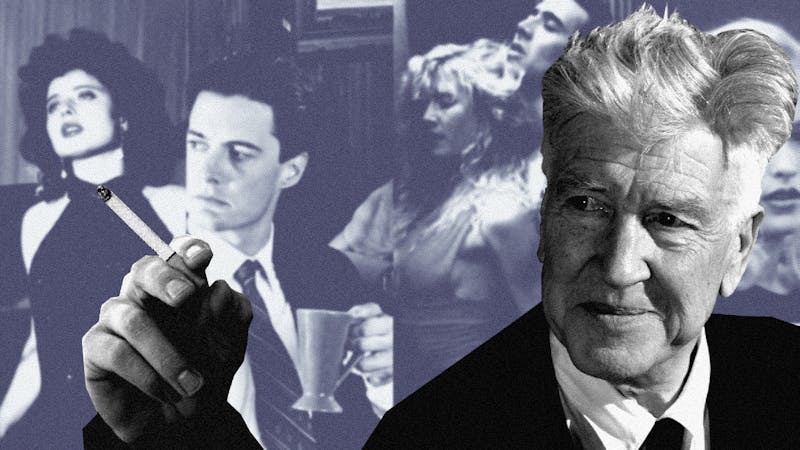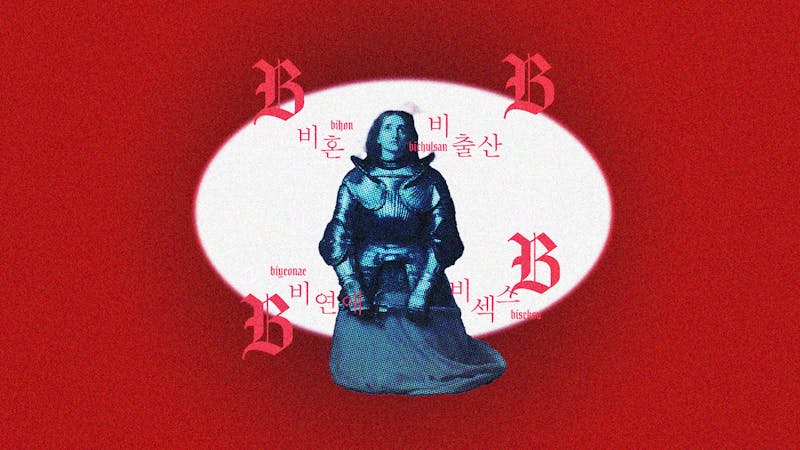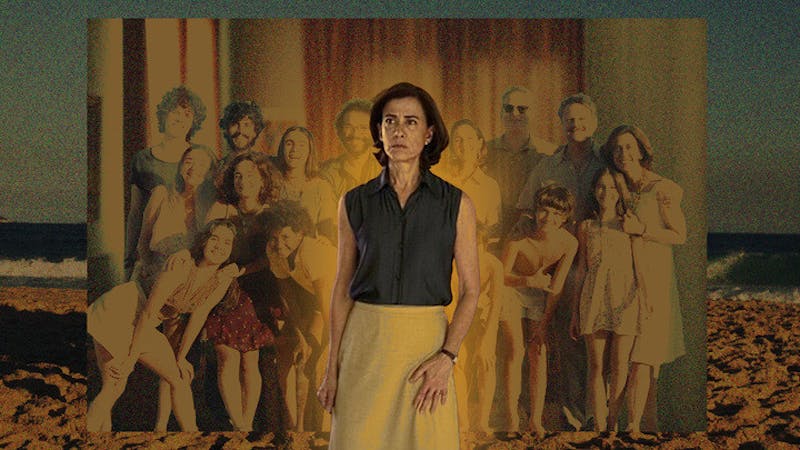I have always said that if someone truly knew me—really knew me—they wouldn’t propose with a Harry Winston ring. They would hunt down a vintage Alexander McQueen piece, something salvaged from an auction or a private collector, something infused with history, rebellion, and raw beauty. A shredded lace gown from Dante, a razor–sharp tailored jacket from Widows of Culloden, or a corset so structured it could break ribs—something that carries weight, that commands reverence.
It has been 25 years since the world lost Lee Alexander McQueen, and still, no one has come close to touching his brilliance. His runway shows weren’t just spectacles; they were sermons in lace, war cries stitched in leather, cinematic tragedies unfolding in silk and bone.
McQueen remains, to me, the greatest creative force in modern fashion. Galliano may have been the poet, Ford the seducer, and Mugler the architect of the supernatural—but McQueen was the visionary, the artist, the one who bared his soul in every stitch. His work wasn’t just about dressing women; it was about armoring them, ensuring they were seen—not as objects of desire, but as forces to be reckoned with.
And yet, this is a tribute piece. A eulogy written in mourning. Because there should have been more. Because I still ache for the collections he never got to make. Because no matter how many times I watch the hologram of Kate Moss in Widows of Culloden, no matter how many times I revisit the robotic spray–painting in No. 13, it never feels like enough. McQueen should still be here.
I see him in the sharpness of a silhouette, in the defiance stitched into a hem, in the way beauty can be both terrifying and untouchable. He didn’t just change fashion—he changed the way I see everything.
For McQueen, with love.
McQueen’s work is best described in his own words: “I design clothes because I don’t want women to look all innocent and naive. I want women to look stronger. I don’t like women to be taken advantage of. I don’t like men whistling at women in the street. I think they deserve more respect. I like men to keep their distance from women, I like men to be stunned by an entrance. I want people to be afraid of the women I dress.”
There are designers who claim to love women, and then there is McQueen, who actually did. His clothes were never about playing into the male gaze. He sculpted women into deities, into untouchable forces, into something men would be too afraid to whistle at in the street. A woman in McQueen is not prey; she is the hunt itself.
If Joan of Arc (AW 98) was about women who burned, Widows of Culloden (AW06) was about the ones left behind—the women who lost their men to war, the ones who grieved but never forgot. It was McQueen returning to his Scottish heritage, to the stories of Culloden, where Scottish soldiers were slaughtered by the English, where entire clans were wiped from history, where loss settled into the land itself. The tartan—McQueen’s family tartan—was draped and cut into silhouettes that carried the weight of history, like ghosts refusing to be forgotten. And then, at the very end, came Kate Moss. Not in the flesh, but as a ghost—a holographic apparition swirling in layers of white, her body dissolving into light. It was a moment of pure, aching beauty. It was McQueen’s way of saying that grief never really leaves, that loss lingers in the air, in fabric, in memory.
Look at The Overlook (AW99)—a runway filled with artificial snow, where the models, clad in furs and towering knits, moved through the cold like they had survived something no one else could. The audience was forced to watch from outside, like voyeurs peering into a world they could never enter. McQueen was drawing from The Shining, yes—the eerie twins walking hand–in–hand were a direct nod to Kubrick’s vision of horror—but this collection wasn’t just a cinematic callback. It was a meditation on solitude, survival, and the beauty of being untouchable. Among the pieces was one of McQueen’s most haunting creations: Shaun Leane’s “Coiled Corset,” molded to a model’s body like a gilded exoskeleton, inspired by the stacked neck rings of the Ndebele people. This wasn’t a collection about warmth or comfort. The Overlook was about power in isolation—how survival itself can be beautiful, how distance can be its own kind of armor.
McQueen designed for the women he wished walked the earth: tragic heroines, mythic warriors, untouchable legends.
And I wonder, sometimes, if that’s why his work speaks to me so deeply. Because I, too, have always wanted to be untouchable. Because I, too, have always wanted beauty to be something awe–inspiring, not something men feel entitled to. McQueen is the only designer who understood that power doesn’t mean being looked at—it means being so terrifyingly beautiful that people don’t dare come closer.
McQueen’s work was never about selling clothes. It was about telling stories. His runways were cinematic, historical, biblical. He didn’t just send models down a catwalk—he built entire worlds.
Highland Rape (AW95) wasn’t about misogyny, as critics claimed—it was about the forced eviction of the Scottish by the English, the raw violence of history. Dante (AW96) was war and religion colliding, Gregorian chants mixed with hip–hop, skeletons seated in the front row.
McQueen named Voss (SS 01) after a Norwegian conservation zone, a place where nature is controlled and preserved. But the world he built on the runway was not a sanctuary—it was a sealed room with no way out. A mirrored glass cube stood at the center of the runway. Inside, models wandered, convulsed, clawed at the walls, their reflections stretching endlessly around them. The padded white walls gave the illusion of an asylum, but their confinement was not just physical—it was psychological. McQueen’s women were not trapped by force, but by the expectations that shaped them. The garments were suffocating—bandages wrapped tightly around bodies, organza veiling faces, corsets laced until every movement was a struggle. Some looked embalmed, others like wounded birds, their dresses stiff with ostrich feathers. Kate Moss twitched in a gown so structured it seemed to restrict breath itself. The materials evoked fragility—chiffon, tulle, sheer fabrics—but there was nothing soft about them. These women were not being dressed. They were being restrained.
Then came the final image, the one that would define Voss. The mirrored walls gave way, revealing fashion journalist Michelle Olley reclining motionless in a glass case, nude, her face covered by a breathing mask, her body covered in live moths.
The reference was Joel–Peter Witkin’s “Sanitarium," a photograph of a veiled woman, stripped of identity, sitting in eerie stillness. But McQueen’s version carried something heavier. The moths were not just symbols of transformation—they were consuming Olley alive. Their wings flickered against her skin, feeding on the image of her as much as the audience did. It was impossible to tell if she was an object of beauty or decay.
Some saw it as a statement on mental illness, on the way women who do not conform are hidden away, studied, and then discarded. Others saw an indictment of the fashion industry itself—an industry that takes fragile, beautiful things, demands metamorphosis, and then leaves behind only dust.
At this moment in his life, McQueen was being consumed, too.
Catherine Brickhill, his former assistant, recalled how the greater the success he achieved, the more it repelled him. He had undergone liposuction but spoke of regretting it. He ordered the finest caviar just to leave it untouched. He was winning, but the victory felt hollow.
Voss was not just about madness or beauty. It was McQueen’s reflection on his own unraveling. A designer at the height of his career, McQueen built a world where women were admired only when they were silent, still, and on display—just as the industry seemed to demand of him. It exalted his genius but drained him, rewarding his darkness while offering no escape from it. He was expected to create relentlessly, to pull from deeper, darker places with every collection, until he had nothing left to give. The fashion industry celebrated his pain, then acted surprised when it consumed him.
McQueen once said, “When I’m dead and gone, people will know that the twenty–first century was started by Alexander McQueen.” But what he never said—what he didn’t have to say—was that the century would also feel emptier without him.
His legacy is not just in museums or the astronomically priced archives of his work. His legacy is in the silence that followed him. The silence of a world that could not keep up with him, of an industry that took everything and then stood stunned when he had nothing left to give.
But the way people talk about his death makes me sick. As if a mind like his could not have existed without collapse. As if the darkness in his work was not a tool, but a prophecy. As if an artist who saw beauty where others saw ruin was only ever destined to become one himself.
There is this lie we tell about artists—that suffering is the cost of genius, that pain is what sharpens vision, what cuts the pattern, what stitches the seams. But McQueen was not brilliant because he suffered. He was brilliant because he saw.
Art happens in spite of pain, not because of it.
McQueen’s work was never about suffering—it was about knowing. He knew how to carve emotion into fabric, how to make a silhouette speak before a word was said. He understood that clothing could carry history, could hold grief, could turn a body into something mythic.
McQueen never softened, never bent to what the industry wanted from him. And even now, long after he is gone, the century still belongs to him.






